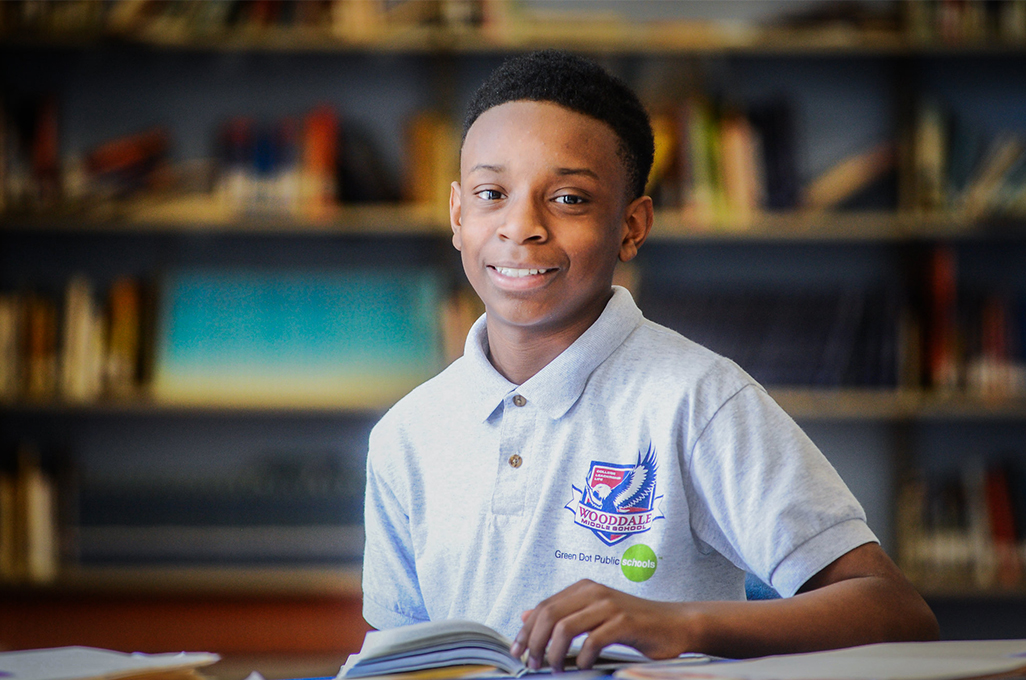Green Dot Commits to 100% Live Classes During Distance Learning

Last school year when schools across the country made the abrupt shift to distance learning, it was an emergency response to a crisis. At the onset of the pandemic we created a task force focused on the safety and education of our students. As we implemented early lessons and refined our distance learning model over the summer, it was clear that we had to prioritize synchronous learning to build community and effectively serve our students.
“We conducted many survey and feedback sessions, and something that came up continuously was the desire to connect,” said Annette Gonzalez, Chief Academic Officer of Green Dot Public Schools California. “It also supports our teachers to do what they're best: using their teaching skills and strategies to engage students.
At Green Dot, we believe that live classroom models are best to prevent learning loss, especially for our most vulnerable students. Recently, researchers have found that both black and brown students are at a greater risk with remote learning, furthering the need for robust academic support and resources. “We needed to make sure that we prioritized the highest leverage approach to mitigating learning loss, and all of our analyses pointed in the direction of live synchronous time with our teachers,” Gonzales said.
Green Dot educators and leaders continue to courageously face the challenges brought on by the pandemic. “Now more than ever, our network is committed to making this a reality for students by focusing on rigorous academics while maintaining health and safety policies that meet the immediate needs of our school community,” said Dr. Megan Quaile, Executive Director of Green Dot Public Schools Tennessee.
Personalized Learning
Our academic model is built on the belief that effective education isn’t one size fits all. While synchronous learning is important to building community, we’ve also found that structured asynchronous learning can prevent burnout and develop curious learners.
“Students need time outside of live instruction to process, organize and manage their in-class learning and assignments,” Gonzalez said. In the fall semester, our schools incorporated two periods of Academic Preparation, a structured block of time where students can complete assignments during the school day, reflect on questions on assignments, and plan topics to discuss during daily teacher office hours.
Investing in Interactive Technology
We’ve made critical investments in digital technology to build community in our virtual classrooms. In the spring semester, our schools narrowed the digital divide in South LA by distributing over 8,000 Chromebooks at the start of distance learning. Likewise, our schools in Memphis distributed over 2000 Chromebooks this school year, and have secured a partnership with Comcast for broadband at home. Our distance learning campaigns helped raise money from the community to support these unplanned but vital investments.
In the beginning of the fall semester, we equipped our teachers with Zoom to widen their ability to create live and interactive resources. Through Zoom, students have the ability to raise virtual hands, ask questions and deliver responses in realtime, and take notes during live video lectures. Teachers have the ability to mute conversations, call on students, and go through Powerpoint presentations synchronously.
Our teachers also use Nearpod, which is an online tool that allows teachers to make Powerpoint presentations interactive, by including polls, open-ended questions, and quizzes during a live presentation. “Nearpod also came with high quality curricular resources, including vocabulary, socio-emotional learning, and professional development resources,” Gonzalez said.
Innovating Interactive Lessons
We remain committed to innovating new ways to keep our learning communities strong. Our distance learning curriculum is anchored in Advisory, where students have the opportunity to connect with their peers on a casual, academic, and socio-emotional level every day. Our Advisory teachers conduct Academic Outreach, where they check in with parents and guardians monthly to discuss their child’s academic progress. Our teachers have extended office hours just to connect with our students, answer questions, and maintain their curiosity throughout the school year.
In this moment of virtual instruction, we will continue to innovate new ways to nurture the potential that lives within all of our students. “Even though the learning structure is different, we know that our students are talented, young scholars. They want to learn—and they have the ability to learn through a consistent schedule, a rigid structure, and an unwavering support for learning every day,” Gonzalez said.
